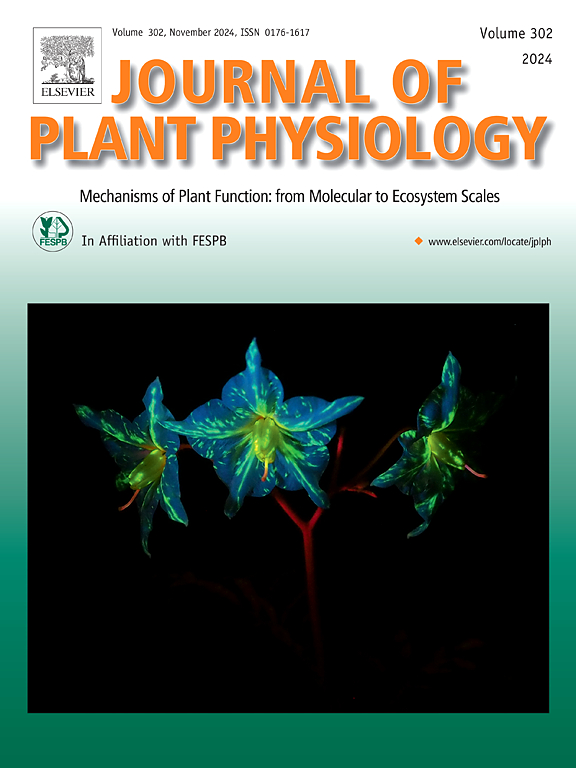下一代蛋白质结构测定技术:植物生物学应用中的挑战与突破
IF 4.1
3区 生物学
Q1 PLANT SCIENCES
引用次数: 0
摘要
结构生物学的进步极大地加深了我们对植物蛋白质的理解,这些蛋白质在光合作用、代谢、信号转导和结构结构等关键生物功能中起着核心作用。深入了解它们的结构对于揭示它们的功能和机制至关重要,而这反过来又对农业、生物技术和环境可持续性具有深远的影响。蛋白质结构生物学的传统方法在解决大蛋白质组装和膜蛋白,特别是在天然细胞环境下蛋白质的动力学和结构特征方面往往存在不足。本文探讨了下一代技术如何改变植物蛋白结构生物学领域,为克服长期障碍和实现重大科学突破提供强大的工具。讨论的关键技术包括先进的x射线晶体学,冷冻电子显微镜,核磁共振波谱学,交联质谱学和人工智能驱动的方法。这些技术在它们的挑战,创新和应用方面进行审查,特别强调它们与植物系统的相关性。最后对植物蛋白结构生物学的研究方向进行了展望。虽然技术细节没有深入讨论,但读者可以参考主要文献以获得更全面的信息。本文章由计算机程序翻译,如有差异,请以英文原文为准。
Next generation technologies for protein structure determination: challenges and breakthroughs in plant biology applications
Advancements in structural biology have significantly deepened our understanding of plant proteins, which are central to critical biological functions such as photosynthesis, metabolism, signal transduction, and structural architechture. Gaining insights into their structures is crucial for unraveling their functions and mechanisms, which in turn has profound implications for agriculture, biotechnology, and environmental sustainability. Traditional methods in protein structural biology often fall short in addressing large protein assemblies and membrane proteins, and, in particular the dynamics and structural features of proteins in the native cellular context. This paper explores how next-generation technologies are transforming the field of plant protein structural biology, offering powerful tools to overcome longstanding obstacles and enabling remarkable scientific breakthroughs. Key technologies discussed include advanced X-ray crystallography, Cryo-Electron microscopy, Nuclear Magnetic Resonance spectroscopy, Cross-linking mass spectrometry, and Artificial Intelligence-driven approaches. These technologies are examined in terms of their challenges, innovations, and application with particular emphasis on their relevance to plant systems. Future directions in plant protein structural biology are also discussed. Although technical details are not covered in depth, readers are referred to the primary literature for more comprehensive information.
求助全文
通过发布文献求助,成功后即可免费获取论文全文。
去求助
来源期刊

Journal of plant physiology
生物-植物科学
CiteScore
7.20
自引率
4.70%
发文量
196
审稿时长
32 days
期刊介绍:
The Journal of Plant Physiology is a broad-spectrum journal that welcomes high-quality submissions in all major areas of plant physiology, including plant biochemistry, functional biotechnology, computational and synthetic plant biology, growth and development, photosynthesis and respiration, transport and translocation, plant-microbe interactions, biotic and abiotic stress. Studies are welcome at all levels of integration ranging from molecules and cells to organisms and their environments and are expected to use state-of-the-art methodologies. Pure gene expression studies are not within the focus of our journal. To be considered for publication, papers must significantly contribute to the mechanistic understanding of physiological processes, and not be merely descriptive, or confirmatory of previous results. We encourage the submission of papers that explore the physiology of non-model as well as accepted model species and those that bridge basic and applied research. For instance, studies on agricultural plants that show new physiological mechanisms to improve agricultural efficiency are welcome. Studies performed under uncontrolled situations (e.g. field conditions) not providing mechanistic insight will not be considered for publication.
The Journal of Plant Physiology publishes several types of articles: Original Research Articles, Reviews, Perspectives Articles, and Short Communications. Reviews and Perspectives will be solicited by the Editors; unsolicited reviews are also welcome but only from authors with a strong track record in the field of the review. Original research papers comprise the majority of published contributions.
 求助内容:
求助内容: 应助结果提醒方式:
应助结果提醒方式:


